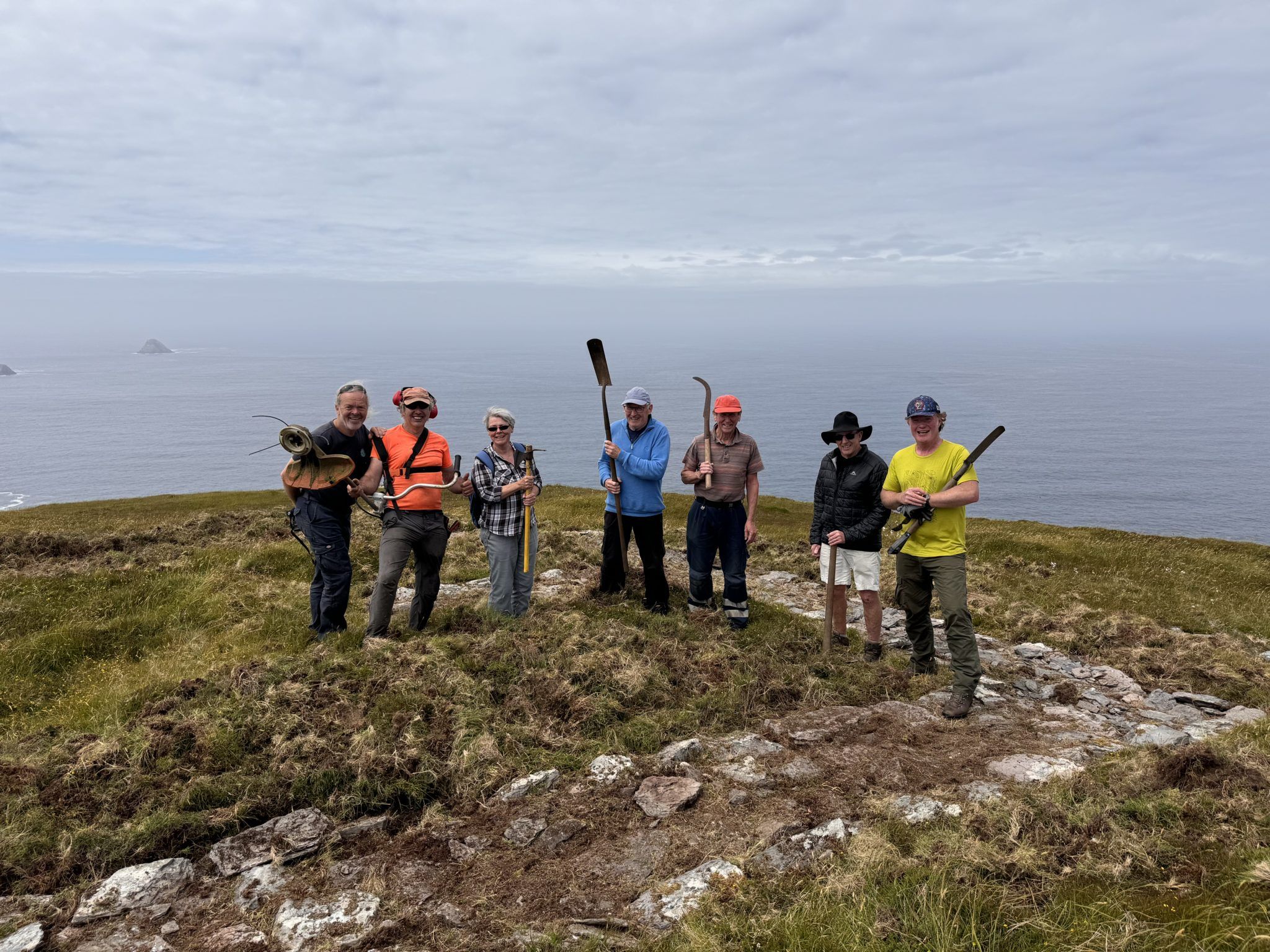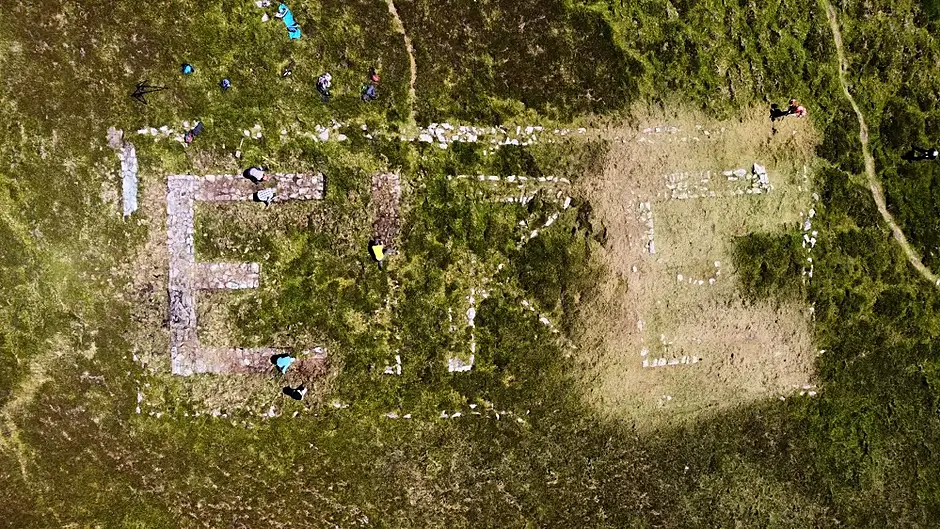AN Irish woman and her German husband decided it was time to unearth the WWII Éire sign on Dursey Island and they found a small army of local volunteers willing to work on the project.
Christian Kostner and his wife Sheila O’Callaghan, who is from North Cork, have been living full-time on Dursey for the last three years.
Throughout that time, they were mulling over the idea of clearing the site and making the sign visible for the islanders, tourists, and the planes passing overhead.
‘We knew that the sign was up there, but it was hard to spot it because it looked like just a few rocks,’ said Christian.
He explained that the signs date back to 1942, when they were put in to warn Allied fighter pilots, and German pilots, that they were entering a neutral country and not to land because they’d have their airplane confiscated and they’d be arrested.
 The volunteers with Christian at the sign, below, clearing it to make it visible to the public again.
The volunteers with Christian at the sign, below, clearing it to make it visible to the public again.
In a second stage, numbers were added. Dursey being number 32. But there are 83 dotted around the country’s coastline. Previously, it was thought there were 82, but a gorse fire cleared dense overgrowth in another headland to reveal the missing sign. The outline of the sign was in fact spotted by a helicopter pilot, flying over the scorched earth.
In recent years a sign at Toe Head outside Tragumna was also revealed by local volunteers who worked to restore it.
‘The signs were used as an early analogue GPS system,’ said Christian, ‘so when they came, and saw the number, they knew where they were.’
The signs did their job and saved a number of lives by diverting planes, but in the intervening years they were left to rot. It is only in recent years that community groups, like the historical society in Castlehaven and community volunteers, have begun restoring the signs in their areas.
Christian said he and Sheila bought their home more than a decade ago but got side-tracked with work projects.
As someone who works in cyber security, it’s intriguing to know he works remotely from Dursey Island.
He explained how the couple, who were previously based in London, stumbled upon Dursey.
‘We were showing some friends around the south west coast of Ireland and one of them, who is a bit of a property fiend and couldn’t walk past an estate agent’s window without having a look, spotted something.
‘He went in, got a piece of paper, and put it on the table in front of us and said: “Guys, this is your kind of house. You have to have a look at it”.’
Christian said he folded up the piece of paper and put it in his jacket, instantly forgetting about it.
‘About two weeks later, when we were back in London, it fell out of my pocket. I showed it to my wife and suggested we go and have a look at the area.
‘In the end, we didn’t buy that property, but we went to the island and completely fell in love with it as a place to live. Dursey has something special about it. And, luckily, we found something else. But it was in a worse condition.
‘You know what it’s like,’ he added ‘when you ring the estate agent and get “no” to questions like: Does it have electricity? Does it have running water? A septic tank?
‘It took a while to purchase the property because there was some archaeological interest on the land, so we had to do a proper survey, which delayed things, but eventually we got planning and built the house in 2013.’
Considering that they are living full-time on the island for the last three years, it would be natural to assume they are retired, but no, they are not. Christian is still working remotely in cyber security, so he works online. ‘I do all my calls and meetings online. We have a mobile internet connection,’ he said.
Dursey is located about 150m offshore but Christian explained that Dursey Sound turns into ‘a raging monster’ when the weather turns and, in winter, you could be cut off for days and weeks on end.
‘When they put in the cable car, it was not meant as a tourist attraction. It was installed for practical reasons, to transport the islanders and their livestock – a practice which has since been discontinued. The livestock now has to go on and off the island by ferry.’
As for living on Dursey, Christian said: ‘We love it. We absolutely love it. We can’t understand why others don’t do the same and insist on working in cities when it is so viable to do so many jobs remotely. Occasionally, I do have to go somewhere to meet someone.’
Just recently they, as a couple, started clearing the Éire sign by undertaking a number of trial digs to see how hard it would be and how long it would take. ‘We quickly saw that doing it on our own would take too long, so we asked Richie Hodges to come up and do a little video and call for more volunteers.
‘He did a lovely video and there was a great response, so on Sunday June 23rd last, we had seven volunteers come over with pick axes and we got well over half of it done.
‘Basically, we removed the rough gorse and now we have to work on getting the smaller bits out and putting the stones in a proper order again.
‘Then, we will have to see if we want to lime-wash it, like it originally was, to make it stand out. But we don’t really want to overdo it and make it look new.
‘That’s not the point, we just want to make it visible again, and to be able to direct tourists to it because they, like us, think it is fascinating.’
The project is ongoing, and as Richie’s videos clearly show, it is proving to be something of an island Meitheal – a great occasion for local volunteers to work together, and enjoy a picnic lunch on the stunning headland with the island’s signal tower visible in the background.









